Keeping staff schedules updated, handling time off requests, and managing last-minute shift swaps can turn into a full-time job for retail managers.
The right retail scheduling software keeps your team organized and your store running smoothly.
In this article, I reviewed the 5 best retail scheduling systems, including:
Our Top Picks
-
1
Best all-in-one retail scheduling software solution
-
2
Good for budget conscious retail teams
-
3

Good for labor compliance and auto-scheduling
Why trust us?
Our team of unbiased software reviewers follows strict editorial guidelines, and our methodology is clear and open to everyone.
See our complete methodology
How I Chose the Best Retail Scheduling Software
Here’s what I looked for when comparing retail scheduling software:
Must-have features
- Scheduling and real-time updates: The software should make it simple to build and adjust work schedules with automatic alerts for employees.
- Time off requests and shift swaps: Employees should be able to initiate requests for time off and shift changes.
- Time tracking: The software should let team members clock in/out and track hours accurately.
- Multi-location visibility: Managers should be able to view staff schedules across multiple store locations in one place, without switching between tabs or accounts.
- Availability tracking: Employees can input the days/times they’re regularly available or prefer to work.
I also made sure the software is:
- User-friendly, so store managers and team members can use it without needing training.
- Affordable, so even small retail businesses can streamline their scheduling process without overspending.
Finally, I checked that the retail scheduling software has:
- Built-in messaging, to help teams communicate about shifts in real time.
- Mobile access, so employees can check their schedules and get updates wherever they are.
- Integrations, to streamline operations and reduce double entry.
The 5 Best Retail Scheduling Software Solutions of 2025
-
Connecteam — Best all-in-one retail scheduling software solution
Connecteam is an all-in-one employee management solution designed for businesses with frontline or hourly workers, like retail teams.
Here’s what Connecteam has to offer:
Why I chose Connecteam: I like that Connecteam makes it easy to not only schedule teams but also handle time off, track hours, and keep everyone in the loop from a single, easy-to-use app. Plus, Connecteam offers the Small Business Plan, which is 100% free for up to 10 users.
Here’s where Connecteam really stands out:
Smarter shift scheduling
Building a retail schedule with Connecteam was seamless. I liked that I could create shifts in minutes, drag and drop them across the calendar, and use AI scheduling to fill in gaps based on availability and qualifications. Connecteam flags conflicts in real time so you don’t have to worry about overlapping shifts or accidental double-bookings.
You can add details to each shift like store location, tasks for the day, instructions, and attachments. Once assigned, employees get notified instantly, and any last-minute changes go out automatically. It’s also easy to manage schedules across multiple stores, which is especially helpful if team members float between locations.
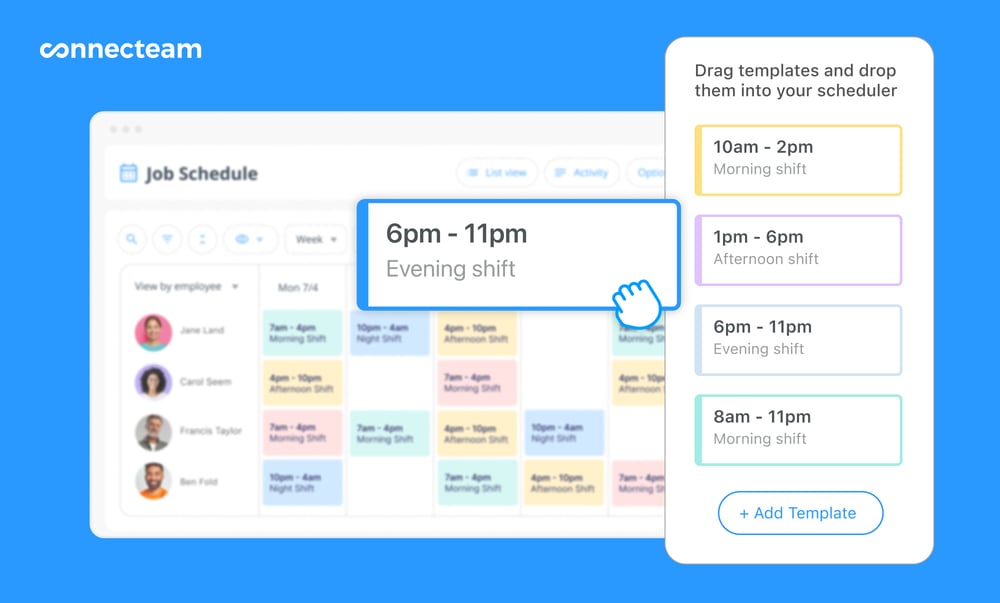
Another feature that impressed me was shift replacements. If someone can’t make their shift, they can release it through the app, and other qualified teammates can choose to pick it up. You can enable admin approval, so managers are still in control of the final schedule and can approve or deny replacements before they’re confirmed. It’s a huge help for staying flexible without losing visibility.
Time off and availability
Connecteam makes time off management and staff availability easy to handle. Employees can submit time-off requests directly through the app, and admins get notified right away. Approvals or declines take seconds, not days.
What I liked even more was that employees can set their weekly availability or blackout dates in advance, so I’m not stuck guessing who can work which shift. It gives a clearer picture while building the schedule and helps avoid last-minute gaps or reassignments.
Built-in time clock with location tracking
One of Connecteam’s strengths is time tracking. With the employee time clock, staff can clock in and out from their phones with one tap. If you need, there’s even an option to enable geofencing to make sure team members only clock in when they’re at the store location. Plus, you can easily monitor attendance in real-time, and send notifications to employees who haven’t clocked in yet.
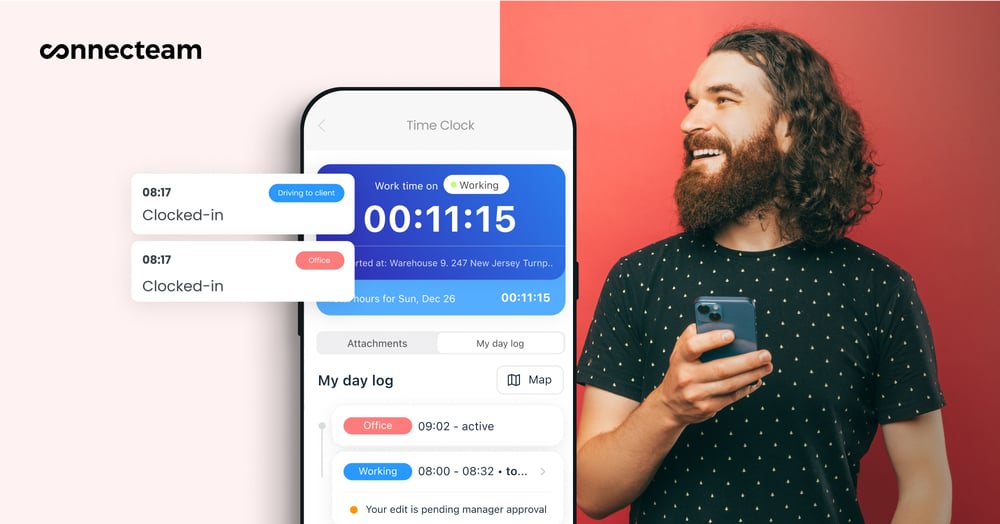
The app automatically logs employee hours into a timesheets for payroll, and you can set break and overtime rules to ensure hours are tracked accurately—no manual calculations needed. I liked that I could review and edit entries, approve timesheets in bulk, and export everything for payroll in just a few clicks. It’s a simple, time-saving process that beats chasing paper timesheets or fixing missed punches.
In-app messaging and communication
In a retail environment, you need to get updates out fast. Connecteam’s online team chat and company update feed make it easy to keep the whole team informed, without needing separate messaging apps.
I liked that I could send direct messages, start group chats by store or role, and post announcements to a central feed. It feels familiar, like the apps team members already use, and I could even see who has read each message to make sure nothing gets missed. That kind of visibility helps reduce no-shows and keeps shifts running smoothly.

I also appreciated that you can also keep work conversations professional and secure by separating internal chats from personal ones. Connecteam even lets you schedule messages to be delivered only during work hours and view employees’ availability status.
Payroll and POS integrations
Connecteam connects easily with the tools you’re already using. It offers a solid range of integrations for payroll and POS systems, including:
And much more…
Connecteam goes beyond shift planning, communication, and time tracking. You can create custom checklists and forms to streamline store operations, like opening procedures, closing tasks, or daily clean-up routines. It’s all organized in one place, so nothing gets forgotten.
There’s also Connecteam’s employee onboarding and training. Use the AI Course Creator to build training materials and guide new hires through everything they need to know, right from their phone. It helps new hires get up to speed faster, without pulling managers away from the floor.
Connecteam also offers a free for life plan – Get Started Now!
Key Features
- AI shift scheduler
- Employee availability and time off tracking
- GPS-enabled time clock with geofencing
- Built-in team chat
- Shift replacements with admin approval
- Digital timesheets
Pros
- All-in-one solution
- Mobile-friendly design
- Real-time updates
- Intuitive and easy to use
Cons
- More integrations in development
Pricing
Free-for-life plan availablePremium plans start at $29/month for 30 users
Join Connecteam's Scheduling App for Retail
Start Scheduling Now -
Homebase — Good for budget conscious retail teams
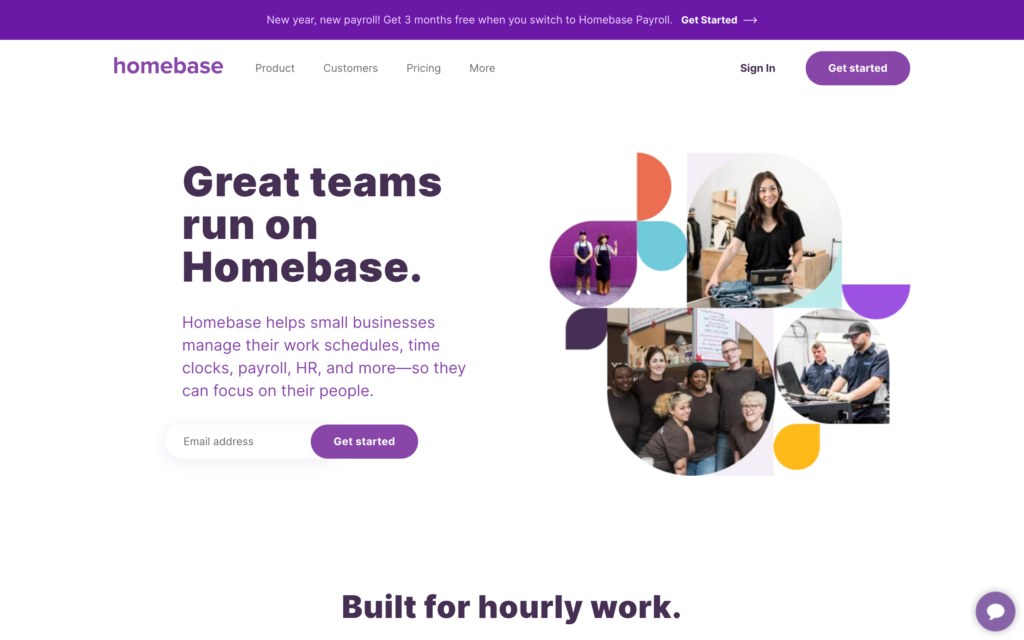
Homebase is a scheduling and time tracking tool for hourly teams in retail, hospitality, and food service settings.
Why I chose Homebase: I like that Homebase is built to help managers handle basic team coordination with minimal setup, so you can jump right in.
Scheduling and employee availability
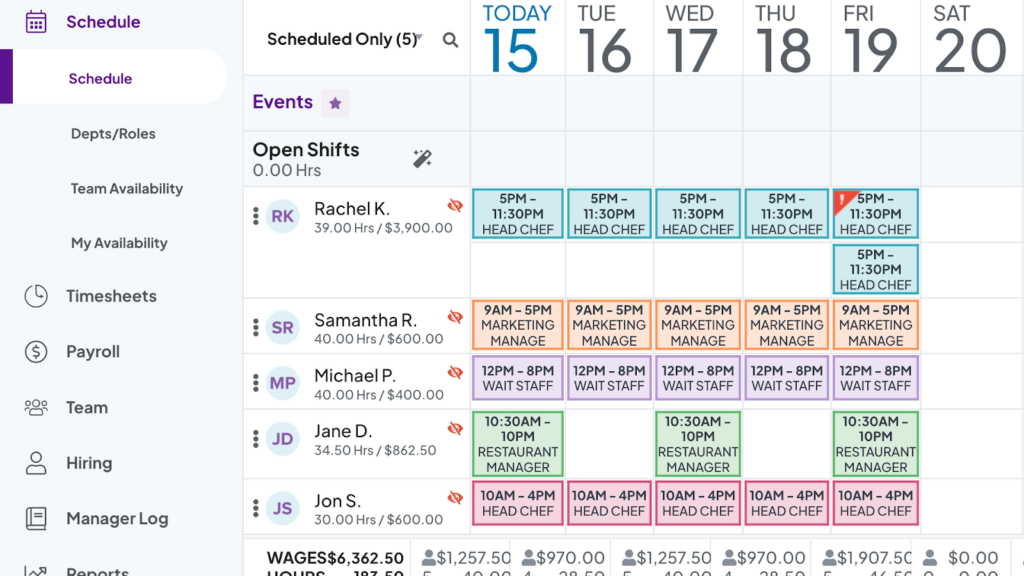
Homebase’s scheduling tool showing assigned shifts, total hours, and projected labor costs for the week. Homebase makes it easy to build schedules from scratch, reuse past ones, or create templates for recurring shifts. I liked the auto-scheduling tool, which quickly fills in shifts based on employee availability and labor targets. You can also let staff pick up open shifts based on their preferences, and shift swaps are simple to manage.
Employees can request time off through the app, and their availability is tracked to help avoid conflicts. On higher-tier plans, you can set rules for PTO, breaks, and black-out periods. I also noticed that when I set recurring availability for a future date, it took effect right away and didn’t show up as repeating in the manager’s view.
Time tracking
Homebase has a built-in time clock that lets employees clock in and out on desktop, mobile, tablets, and even some POS systems. They can log breaks, manually enter hours, or use a shared device with a personal PIN. Time entries convert into digital timesheets that include hours, breaks, PTO, and wages.
Managers can get alerts for late clock-ins and overtime, set geofences to restrict clock-ins to job sites, and require GPS or photo verification. I liked the concept of having a photo ID, even though it only works on tablets and POS systems. I also noticed time is tracked only to the nearest minute, not the second, which could limit accuracy a bit.
Messaging and team communication
Homebase includes a built-in messenger that lets you send direct messages, group chats, or company-wide announcements. You can also add text notes to shifts so employees know what to expect before clocking in.
While it’s helpful that you get alerts when someone reads a message or views their schedule, the chat feature has some downsides. You can’t attach files or send media like images or videos, so all you have is just plain text.
I also ran into glitches where messages didn’t appear in the mobile app without manually refreshing. For a feature that’s meant to be real-time, that was frustrating.
What users say about Homebase
I like how accessible and simple the system is. It is easy to access from my phone as well as my computer, or POS system.
One of the main issues we’ve encountered with Homebase is its performance — the platform often runs very slowly and takes too long to load or process tasks, which really affects our workflow.
Key Features
- Scheduler with shift templates
- GPS time clock
- Built-in team messaging
- Digital timesheets
Pros
- Many HR and payroll integrations
- Intuitive user interface
Cons
- No task/project management tools
- Most features cost extra
Pricing
Starts at $24/location/month Trial: Yes — 14 days Free Plan: Yes — For a single location & up to 20 employees
-

Deputy — Good for labor compliance and auto-scheduling
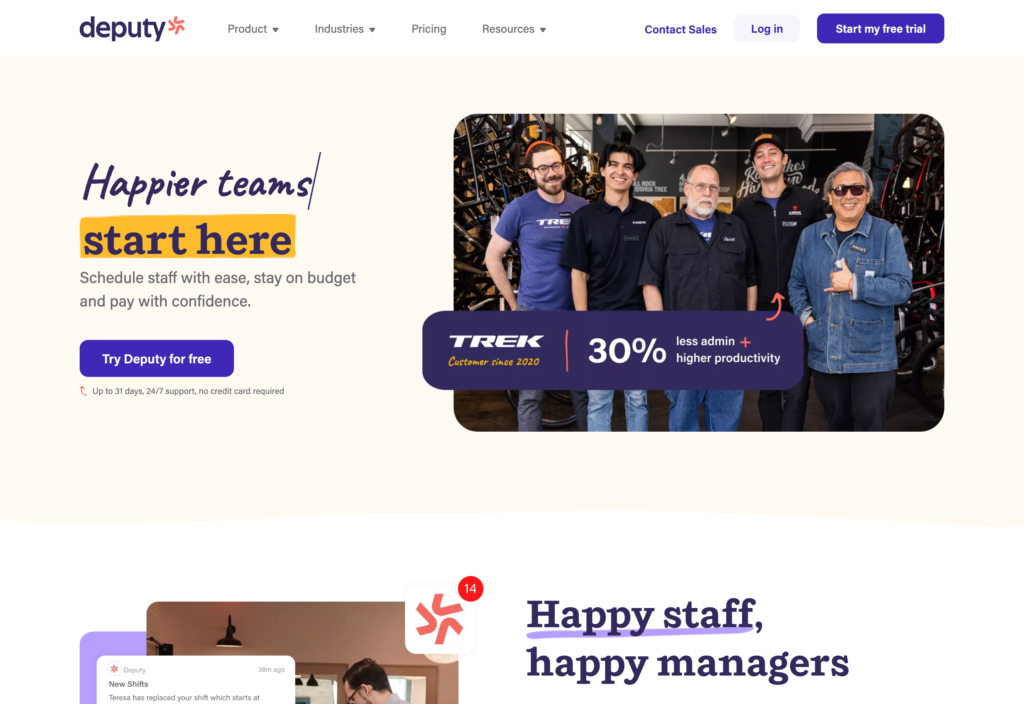
What’s new with Deputy
Deputy recently raised its base price from $4.50 per user/month to $5 per user/month. Existing clients are now being moved to the new pricing, significantly raising costs for many.
Deputy is a workforce management tool built for shift-based teams, with a focus on scheduling, time tracking, and compliance.
Why I chose Deputy: Deputy offers solid scheduling and time tracking tools along with built-in labor law compliance features. I like that it’s designed for businesses that need accurate timekeeping, shift coordination, and multi-location visibility.
Scheduling and time off
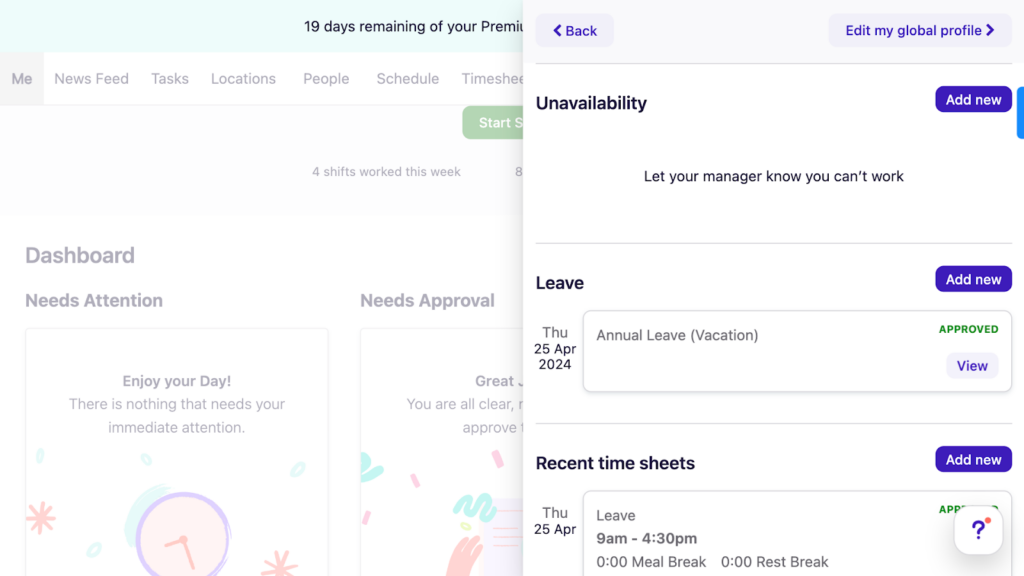
Employees can easily mark times as unavailable and request leave. Deputy’s scheduling is flexible and includes tools like drag-and-drop shifts, templates, and auto-scheduling. It uses real-time data like availability, qualifications, and labor cost to suggest the best-fit schedule. You can also leave shifts open for team members to claim.
I liked that it alerts you about fatigue and overtime risks while you’re building the schedule.
Employees can also submit time off and update their availability through the app. The main issues I had were the cluttered mobile layout and that Deputy doesn’t flag shifts assigned to team members with unapproved time-off requests.
Time tracking tools
Deputy offers clock-ins via mobile app, tablet, or desktop, and supports photo verification and location stamps for each shift. You can even set up geofencing so employees can only clock in from a specific job site.
The system converts time entries into digital timesheets, and flags missed breaks or late clock-ins automatically. I appreciated how easy it was to review and approve timesheets before sending them to payroll.
I liked that employees can leave shift feedback when they clock out. However, I was surprised that there’s no way to mark notes as urgent for pressing issues.
Company communication
Deputy has a newsfeed feature for internal communication. I could post updates to individuals, departments, or entire locations, and include PDFs, images, or videos. Employees can comment, react with emojis, and confirm they’ve seen a message.
However, I found a few things missing. You can’t create custom groups for messaging and the feed doesn’t feel suited for one-on-one communication. I wasn’t comfortable using it for private messages and would’ve preferred a more chat-style interface for real-time conversations.
What users say about Deputy
Deputy is accessible, very clear and easy to use, there was no glitch since I used it and I can see my schedule and track my shifts.
Setting up PTO and other time off requests is clunky and not easy to intuitively review.
Key Features
- Shift scheduling
- GPS time clock
- Digital timesheets
- Time off and availability tracking
Pros
- Strong compliance features
- Auto-scheduler
Cons
- No dedicated in-app chat
- Cluttered mobile layout
Pricing
Starts at $4.50/user/month Trial: Yes — 31-day Free Plan: No
-

Shiftboard — Good for complex scheduling and unionized teams
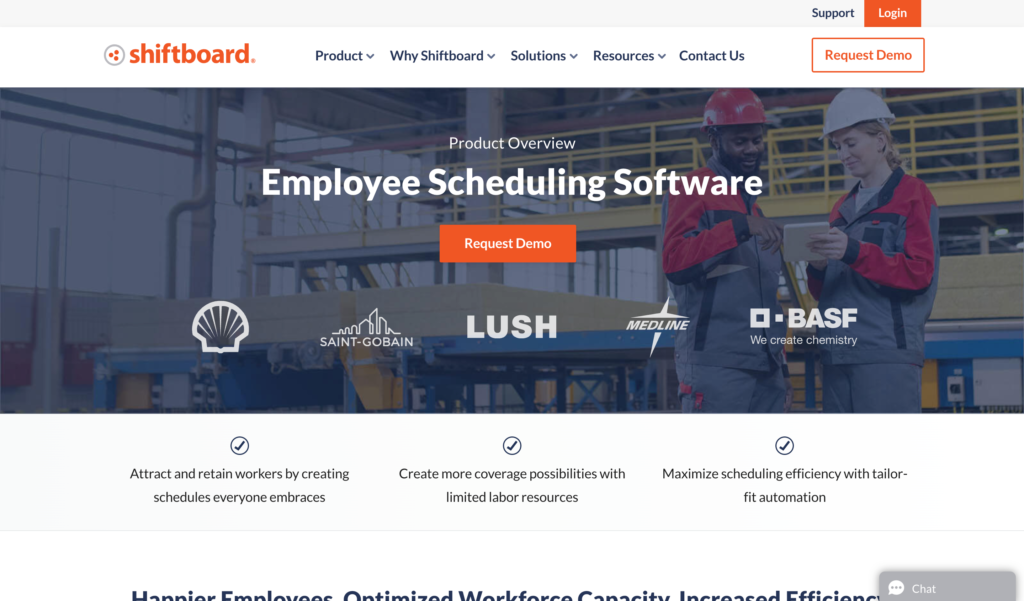
Shiftboard is a workforce scheduling platform built for medium or large, shift-based operations.
Why I chose Shiftboard: Shiftboard offers structured scheduling tools with features like auto-scheduling, shift sign-up sheets, and a trade board for swaps. I like that it’s designed for high-volume operations with complex staffing needs.
Scheduling and time off
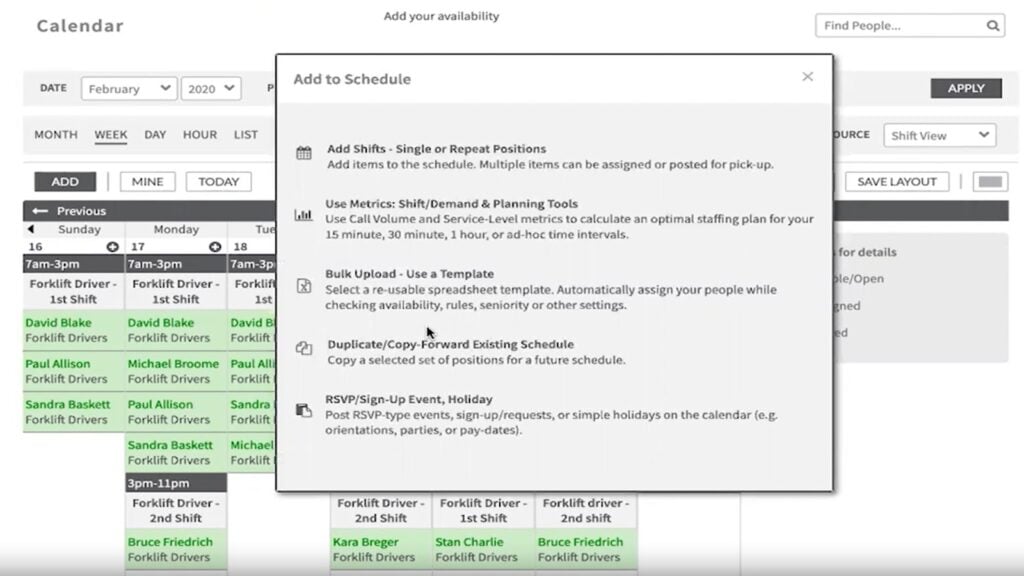
Shiftboard lets you create schedules in multiple ways. Shiftboard offers several ways to build schedules: you can create shifts manually, duplicate past ones, or import from Excel. You can also create shift sign-up sheets or allow employees to pick up available shifts. Plus, there’s a built-in trade board for shift swaps with admin approval.
The biggest downside I found is the lack of drag-and-drop scheduling, which makes quick edits more time-consuming than other platforms.
Time-off requests are supported and you can define different types of leave, but there’s no way to track leave balances. Employees can’t see how much time off they’ve accrued, and there’s no calendar view to see scheduled leave.
Time tracking
Shiftboard has a basic time clock that lets employees clock in and out from the app. The time clock can log locations at clock-in and clock-out, but doesn’t support GPS tracking throughout the day or geofencing. That means no automated clock-in reminders or location-based restrictions.
There’s no support for kiosks, PIN codes, or photo verification, so there’s not much in place to prevent time theft. Time entries are compiled into timesheets for manager review and approval, but you can’t set shift-specific pay rates or flag entries for review. To me, time tracking feels like an afterthought compared to other platforms.
Where it falls short
There were a few things that stood out to me as drawbacks. Shiftboard has a communication tool, but it’s very limited. It’s mostly shift-related, one-way messages with no real-time chat or group messaging.
The overall web interface felt very dated and wasn’t easy to navigate. Even though the mobile app looks better, it doesn’t have all the functionalities as the desktop version, so you’re limited.
It really seems like Shiftboard is geared toward larger organizations, especially because its base plan is designed for teams of 100+. If you’re a smaller retail business, it might be harder to evaluate since pricing details aren’t available upfront.
What users say about Shiftboard
I love that I can go in and schedule my own hours and put up commits on the tradeboard if they cannot be honored. I also like that I can go into the tradeboard section and take commits if I want to work them at any time of day.
Though it is customizable, there are certain things we have been unable to change.
Key Features
- Staff scheduling
- Time clock
- Timesheets
- Team messaging
Pros
- Auto-scheduling feature
- Supports shift swaps and signups
Cons
- No drag-and-drop feature for quick edits
- Pricing is not transparent
Pricing
Contact vendor for price Trial: No Free Plan: No
-
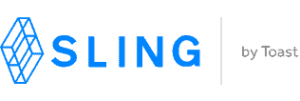
Sling — Good for schedule communication and cost control
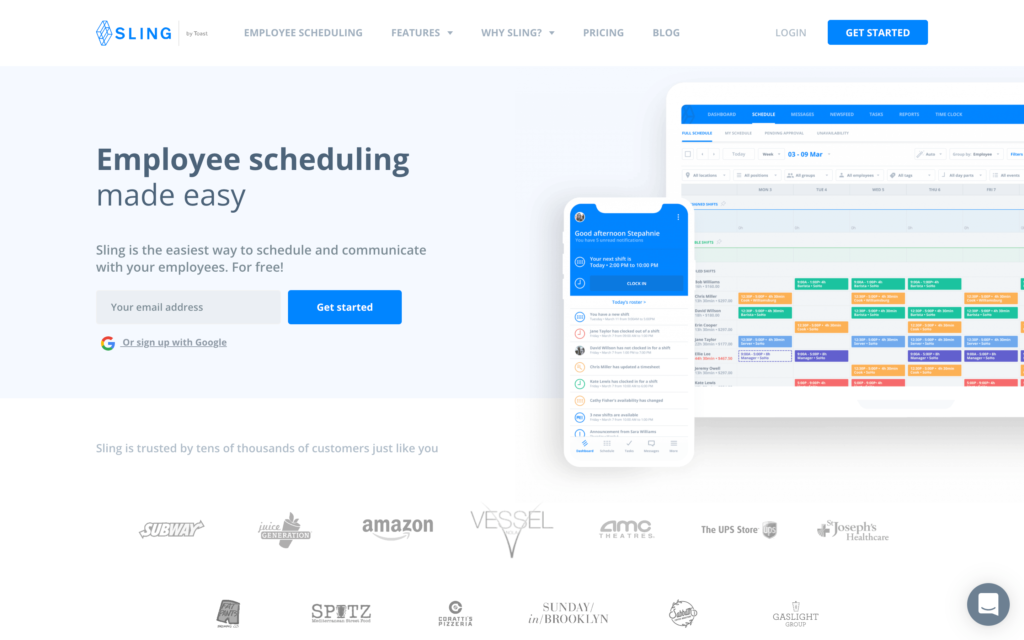
Sling is a scheduling and communication platform designed for shift-based teams.
Why I chose Sling: Sling offers a straightforward way to create schedules, track time, and manage labor costs. The platform includes features like shift swapping, time-off requests, and built-in messaging, making it a practical choice for small to medium-sized businesses.
Shift scheduling and time off

Sling has a template editor with ways to build out schedules. I like that Sling lets you build schedules manually or use templates for recurring shifts. Employees can request time off, and managers can approve or deny the requests within the platform.
The system also supports shift swapping, enabling employees to trade shifts with manager approval.
However, Sling lacks advanced scheduling features like drag-and-drop functionality and predictive scheduling based on labor demand. Plus, you can’t sort employees by skill or certification when assigning shifts, which can make it difficult to staff precisely.
Time tracking
Employees can clock in and out using the Sling mobile app, with time entries automatically compiled into digital timesheets. The platform tracks regular hours, overtime, and paid time off.
While Sling records clock-in and clock-out times, it doesn’t offer geofencing or location-based restrictions. I also found that the mobile app isn’t as user-friendly as the desktop version, which could be a challenge for some managers and employees.
In-app communication
I liked that Sling includes built-in messaging features, allowing for private and group chats. Managers can also send announcements and updates to the entire team, with the option to even send files
However, I thought the notification system was a bit overwhelming. There’s no way to prioritize alerts or group them by category, which makes it harder for team members to focus on what’s important.
What users say about Sling
The most useful about Sling is that you can create different shifts at different times but also you can also leave notes when you want to let someone know that you couldn’t take lunch time or you had to leave earlier.
I felt the app has features that could be updated for better usage like employee adjust shift with management approval, forms, etc.
Key Features
- Schedule templates
- Mobile time clock
- In-app communication
- Time off management
Pros
- Built-in tools for labor cost control
- Flags shift conflicts
Cons
- No geofencing or GPS tracking
- Limited customization
Pricing
Starts at $2/user/month Trial: Yes — 15-day trial Free Plan: Yes — Up to 50 users (Changing to 30 users from March 1st, 2025)
Compare the Best Retail Scheduling Software Solutions
| Topic |
 Start for free
Start for free
|
|

|

|

|
|---|---|---|---|---|---|
| Reviews |
4.8
|
4.6
|
4.6
|
4.4
|
4.6
|
| Pricing |
Starts at just $29/month for the first 30 users
|
Starts at $24/location/month
|
Starts at $4.50/user/month
|
Contact vendor for price
|
Starts at $2/user/month
|
| Free Trial |
yes
14-day
|
yes
14 days
|
yes
31-day
|
no
|
yes
15-day trial
|
| Free Plan |
yes
Free Up to 10 users
|
yes
For a single location & up to 20 employees
|
no
|
no
|
yes
Up to 50 users (Changing to 30 users from March 1st, 2025)
|
| Use cases |
Best all-in-one retail scheduling software solution
|
Good for budget conscious retail teams
|
Good for labor compliance and auto-scheduling
|
Good for complex scheduling and unionized teams
|
Good for schedule communication and cost control
|
| Available on |
What is Retail Scheduling Software?
Retail scheduling software is a digital tool that helps retail businesses plan and manage employee work schedules. Instead of using spreadsheets or paper schedules, these tools offer a way to organize shifts, track availability, and communicate with staff.
This type of software is designed to reduce scheduling errors, avoid understaffing or overstaffing, and make sure employees know when and where they’re expected to work. It’s especially helpful for managers juggling multiple employees, part-time shifts, and time-off requests.
How Does Retail Scheduling Software Work?
Retail scheduling software automates and simplifies the process of building and managing staff schedules. Managers can create shifts, assign them to employees, and adjust schedules in real time. Many tools also support features like recurring shifts, shift swapping, and automatic alerts for overtime or scheduling conflicts.
Employees usually have access to a mobile app or online portal where they can view their schedules, request time off, or pick up open shifts. Some systems even include built-in messaging so teams can stay aligned without needing separate apps.
Most retail scheduling systems also include time tracking and basic payroll prep features, like timesheets that auto-fill based on clock-in/clock-out times. This makes it easier to manage both attendance and labor costs in one place.
Benefits of Retail Scheduling Software
Using retail scheduling software can transform how you manage your business. Some of the benefits include:
Clear, Updated Schedules
Managing a retail schedule manually often leads to confusion, missed shifts, and constant last-minute changes. Retail scheduling software keeps everything in one place, so both managers and employees always know who’s working, when, and where. This reduces scheduling errors and improves store coverage.
Simplified Shift Changes and Time Off
Handling shift swaps and time-off requests through text messages or handwritten notes is chaotic. With the right software, employees can make requests directly in the app, and managers can approve them with just a few clicks. It speeds up the process and ensures no request gets overlooked.
Reduced Labor Costs
By giving you a clear view of hours worked, overtime, and labor costs in real time, retail scheduling tools help you staff smarter. You can adjust shifts before costs get out of hand, without sacrificing coverage or employee satisfaction.
Real-Time Team Support
Whether it’s a new store policy or a quick shift reminder, retail scheduling software makes it easier to communicate with your team. Instant updates can help avoid misunderstandings, and everyone stays informed without needing group texts or extra meetings.
Happier, More Reliable Team Members
When employees can check their schedules, manage their availability, and swap shifts easily, they’re more likely to show up and stick around. A smoother scheduling process leads to fewer no-shows and stronger team satisfaction overall.
How much does retail scheduling software cost?
Most retail scheduling software is priced per user or by feature tier. On average, you can expect to pay $2 to $15 per user per month for basic plans, with more advanced features raising the price per location or manager on higher-tier plans.
Connecteam’s Small Business Plan stands out. It’s completely free for up to 10 users, with access to scheduling, time tracking, and communication tools. For small or growing retail teams, that means real savings and access to essential tools without the extra cost.
>> Get started with Connecteam for free today! <<
FAQs
Start by collecting employee availability and store coverage needs. Then use scheduling software to assign shifts, manage time-off requests, and avoid conflicts. Most tools help you visualize schedules and notify staff automatically.
Connecteam offers a 100% free plan for up to 10 users, including scheduling, time tracking, and communication tools, making it ideal for small retail teams.
Connecteam is the best option for small businesses. It’s simple to use, built for deskless teams, and includes key features like scheduling, shift swaps, time off requests, and team chat, all in one app. Plus, it’s free for up to 10 users!
The Bottom Line On Retail Scheduling Software
Keeping retail staff schedules accurate, up to date, and fair shouldn’t be a full-time job. But without the right tools, it can feel like one. Missed shifts, unorganized communication, and staffing gaps can all hurt day-to-day operations.
Retail scheduling software simplifies the process and gives you a clear view of availability, time off, and shift coverage, all while keeping your team connected.
Connecteam is a top choice for retail teams. It’s user-friendly, packed with features, and completely free for up to 10 users. Clearly, Connecteam is the smart and affordable solution for any growing retail business.





